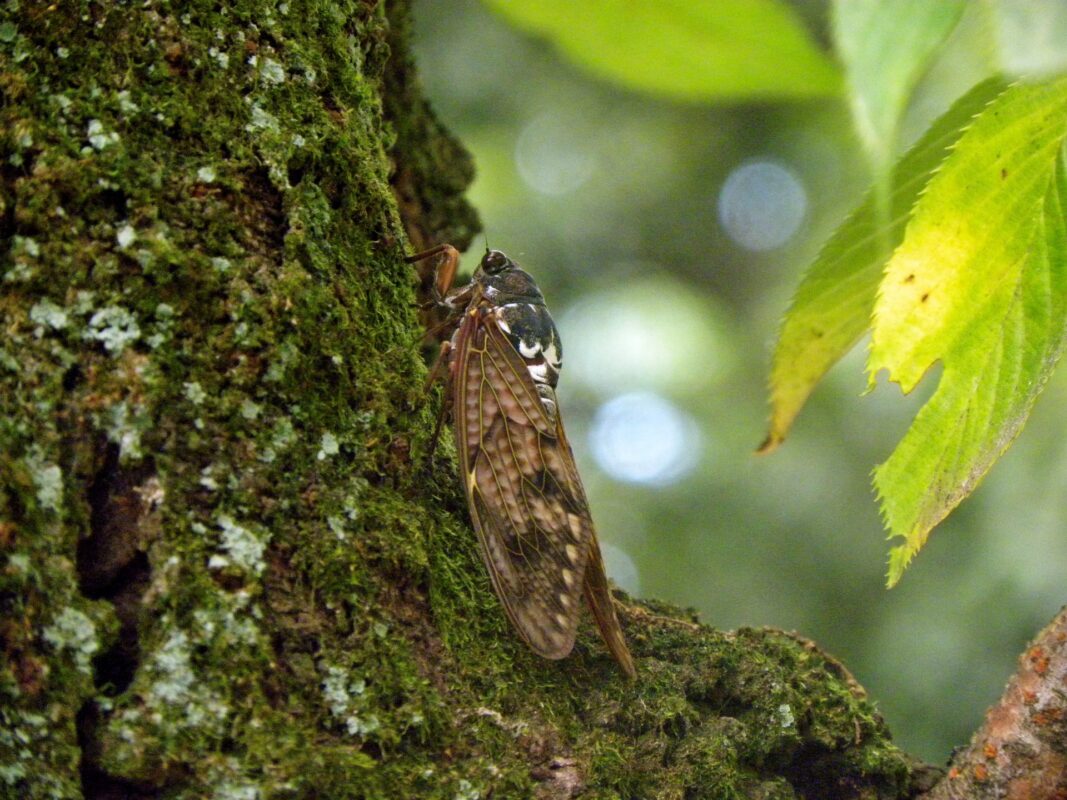Standardization of the Term ‘Taisho’ (Major Heat).How to Welcome Taisho: Delving Deep into the Charm of Japan’s Forty Seasonal Divisions.

『 This article is… 』
This page offers a deep insight into Japan’s traditional ‘Taisho’ (Major Heat) and introduces the unique characteristics of each region, such as the Gozan no Okuribi in Kyoto and the Hamana Lake Festival in Shizuoka. It is beneficial for readers interested in traditional culture and local events, as it helps understand the diversity of Japan’s summer customs and culture, and serves as a reference for travel and cultural studies.
Hello, I’m Kasumi, a travel web writer. I have traveled through all 47 prefectures of Japan and continue to be fascinated by the unique customs and history of each region. This time, I want to delve deep into ‘Taisho’ (Major Heat), one of the ‘Shijuu Kiseki’ (Forty Seasonal Divisions) in the traditional Japanese calendar. I will explore its origins, meaning, characteristics, and its impact in the present day.
‘Taisho’ is a seasonal division indicating the hottest period of the year, but it encompasses more than just high temperatures. It’s imbued with deep historical background and cultural significance. I will unravel the different ways Taisho is welcomed in various regions, the customs and festivals associated with it, and how it is observed in modern times, interweaving my experiences and impressions.
As I traveled across Japan, I encountered many events and customs related to Taisho in various regions. I hope to share what I’ve felt and learned through these experiences and convey the true charm of Taisho. So, let the journey begin.
The Meaning and Origin of Taisho (Major Heat)
What is Taisho?
Taisho is one of the forty seasonal divisions, marking the hottest period of the year. It begins around July 23 each year and continues until the day before Risshu (the beginning of autumn). This period, being the peak of summer heat, is aptly named ‘Taisho.’ In the times when Japan’s traditional calendar, particularly in agriculture, was closely followed, Taisho was not only the peak of farming activities but also a crucial time for strategies against the summer heat.
The Origin and Historical Background of Taisho
The origin of Taisho stems from the twenty-four solar terms of China, introduced to Japan during the Nara period. It then blended with Japan’s unique geography and culture. Taisho was originally an important period in agrarian societies, especially for promoting the growth of crops like rice. This period is also marked by ancestor worship rituals and festivals wishing for bountiful harvests across various regions.
Regional Differences in Celebrating Taisho
Traveling across Japan, I had many opportunities to experience the uniqueness of how different regions welcome Taisho. For example, in Kyoto, there is the Gozan no Okuribi, and in Gifu, the Gujo Dance; different traditional events and festivals are held in various places during Taisho. These events reflect the history, culture, and lifestyle of each region, allowing one to experience the diverse cultures of Japan through Taisho.
Lifestyle Adaptations During Taisho
The Japanese have long devised ways to cope with the harsh heat of Taisho. Traditional houses, for example, use verandas for better airflow, and items like sudare (bamboo blinds) and mosquito nets for cooling. The use of fans and hand-held fans remains a prominent practice to beat the heat.
Thus, Taisho is not just a period of intense heat but a seasonal term filled with Japanese history, culture, and ingenious adaptations. In the next chapter, I will delve into specific customs and events related to Taisho.
Regional Customs and Events of Taisho
Traditional Events Across Japan Related to Taisho
Various events and festivals related to Taisho are held across Japan, rooted in each region’s climate and culture. For instance, in Kyoto, where I visited, the Gozan no Okuribi is held annually during Taisho, signifying the sending off of ancestral spirits, a symbol of summer in Kyoto.
In Shizuoka Prefecture’s Hamana Lake, the ‘Taisho Festival,’ worshipping the sea gods, is celebrated, praying for the safety and abundance in fishing. The festival features colorful floating decorations on the lake, creating a mystical atmosphere.
Regional Food Culture and Taisho
Each region has its rich food culture during Taisho. For instance, in Miyagi Prefecture, where I visited, ‘Summer Trout Sushi’ is made to match the Taisho period, offering a refreshing taste suitable for the hot season.
In the Kyushu region, eel is commonly eaten to prevent summer fatigue, especially on the day of Taisho, considered a wisdom for surviving the hot summer.
Symbols of Taisho: Fans and Mosquito Nets
During Taisho, fans and mosquito nets are commonly used across Japan. These are symbols of Japanese summer, and I have seen their unique designs and forms in various regions. Fans are used for easy cooling, while mosquito nets provide comfortable sleep at night, integral to the Japanese lifestyle for centuries.
Festivals that Color Regional Taisho and Their Significance
The various festivals during Taisho in different regions reflect their history, culture, beliefs, and wishes. From my experiences, these festivals play a vital role in strengthening community bonds and passing traditions to future generations.
Thus, Taisho is celebrated in various forms across Japan, deeply reflecting the culture and customs of each region. In the next section, I will explore the characteristics of Taisho and its significance in modern society.
Characteristics of Taisho and Its Meaning in Contemporary Society
Climatic Characteristics of Taisho
Taisho is positioned as the hottest period of the year. During this time, most parts of Japan experience a hot and humid climate, with tropical nights and extremely hot days being common. My travels during these summer days allowed me to experience these harsh climates and the customs and events of different regions. Especially, the high humidity of Japanese summers makes the heat feel even more intense.
Modern Ways of Spending Taisho
In modern society, the ways of spending Taisho have diversified. With the spread of air conditioning and electric fans, spending time comfortably indoors has become common. However, in many regions I visited, there remains a strong culture of seeking natural coolness, utilizing traditional wisdom like using sudare and mosquito nets.
Health Considerations During Taisho
During Taisho, concerns about heatstroke and summer fatigue are prevalent. Therefore, health management awareness activities are conducted in various regions, and I have also collected information on healthy ways to spend the summer. The importance of hydration, a well-balanced diet, and adequate rest are emphasized as key points to overcome the heat.
Events and Tourism During the Taisho Period
The Taisho period overlaps with the summer vacation, so various events and festivals are held nationwide. These are major attractions for tourism, and my coverage of these events has provided me opportunities to deepen my understanding of the culture and traditions of various regions. For example, fireworks, Bon dances, and beach activities are unique summer enjoyments offered in different places.
The Contemporary Significance of Taisho
Today, Taisho is not just a period indicating heat but also an important opportunity to experience Japan’s summer culture and traditions. It provides value in modern society through the inheritance of traditional events, revitalization of regional communities, and heightened health awareness.
This chapter delved into the characteristics of Taisho and its role in contemporary society. In the next section, we will focus on specific data and statistics related to Taisho and their analysis.
Data and Statistical Analysis Related to Taisho
Temperature and Humidity Changes During the Taisho Period
The Taisho period is characterized by extreme conditions in both temperature and humidity. According to data from the Meteorological Agency, the average temperature during the Taisho period in recent years has seen an increase in days exceeding 30 degrees in many regions. The humidity, often above 70%, further elevates the perceived temperature. This data highlights the importance of heat countermeasures in each region I visited.
Trends in Heatstroke Patients During the Taisho Period
Heatstroke is a health issue requiring special attention during Taisho. According to statistics from the Ministry of Health, Labour and Welfare, the number of emergency transports due to heatstroke during the Taisho period has been increasing annually. The elderly and children are particularly affected, emphasizing the importance of preventive measures by regional communities and administrations.
Tourist Numbers and Economic Impact During the Taisho Period
The Taisho period coincides with the tourist season. Reports from the Tourism Agency indicate a significant increase in tourists in major summer destinations during Taisho, due to events like summer festivals and fireworks shows, greatly impacting the local economy.
Participant Numbers in Regional Events Related to Taisho
The events related to Taisho in each region I visited are important events for the community. The number of participants varies by region but typically ranges from thousands to tens of thousands. These events play a crucial role in preserving regional traditions and cultures, as well as being important for the local economy and tourism industry.
The Relationship Between Taisho and Energy Consumption
Finally, let’s look at energy consumption during the Taisho period. Data from the Ministry of Economy, Trade and Industry shows that electricity consumption increases significantly during this period due to the use of cooling equipment. This highlights the importance of energy-saving measures and considerations for future energy policies.
This chapter analyzed specific data and statistics related to Taisho. In the next section, we will provide specific advice and suggestions for welcoming Taisho.
Practical Advice and Suggestions for Welcoming Taisho
Measures for Heatstroke Prevention
During Taisho, heatstroke is a major concern. Preventive measures include adequate intake of water and salt. Especially when going out or after exercising, it’s crucial to consciously hydrate. Also, avoiding direct sunlight, choosing light clothing, and taking frequent breaks are effective strategies.
Suggestions for Eco-Friendly Cooling
Relying too much on air conditioning during Taisho can lead to energy consumption issues. As an eco-friendly alternative, consider traditional methods I saw in various regions. Using sudare and mosquito nets for natural cooling, creating wind with fans, and enjoying the evening breeze are comfortable ways to coexist with nature.
Healthy Summer Eating
Nutritional balance is important for meals during Taisho to prevent summer fatigue. Ensure a diet rich in protein and vitamins. Utilizing traditional Japanese summer ingredients like eel and summer vegetables is also beneficial. These foods provide energy without overly cooling the body.
Participating in Regional Summer Events
Participating in local festivals and events during Taisho is a great opportunity to experience regional culture. From my travels, these events are one of the best ways to deepen community ties and enjoy the ambiance of a Japanese summer. However, always prioritize health and take necessary precautions against the heat.
Practicing Environmentally Conscious Living
Finally, being environmentally conscious is important in overcoming Taisho. As energy-saving measures, consider appropriate use of cooling devices, turning off lights during the day, and utilizing the cool of summer nights. These everyday eco-friendly practices can be easily incorporated into daily life.
Summary and Impressions
The Significance of Taisho and Its Impact on Modern Times
Through this article, I have explored how the seasonal term ‘Taisho’ transcends mere meteorological phenomena, deeply rooting itself in Japanese culture, traditions, and people’s lives. Taisho represents the peak of harsh summer heat in Japan’s seasons, but it is also a valuable opportunity for communities to unite through local customs and festivals, and for the inheritance of culture.
My Journey and Experiences
Traveling across Japan, I have experienced various customs and festivals related to Taisho in different regions, deeply moved by the richness and uniqueness of each area’s culture. The harmony of tradition and modernity, respect for the natural environment, and the wisdom of people’s lifestyles I observed in each region have been invaluable lessons for me.
Suggestions for Modern Society
To comfortably get through Taisho, balancing traditional wisdom with modern technology is important. By living in harmony with nature and being environmentally conscious, we can contribute to a healthier and more sustainable society.
Conclusion
Taisho symbolizes Japanese summer, offering hints for a comfortable and healthy lifestyle. By valuing regional customs and events while incorporating them into modern life, we can discover new ways to enjoy summer.
Through this journey, I have rediscovered the beauty of Japan’s rich culture and traditions. I look forward to sharing the allure of all parts of Japan with you.
Kasumi’s Highlights
Regional Characteristics of Taisho Across Japan
Kyoto Prefecture – Gozan no Okuribi
Kasumi’s Highlight: During Taisho, the traditional ‘Gozan no Okuribi’ is held in Kyoto. This event, meant to send ancestors’ spirits to the other world, is characterized by beautiful fire characters and shapes lighting up the summer night sky. My visit there was indescribably moving, creating a magical scene coupled with the atmosphere of the ancient capital.
Shizuoka Prefecture – Hamana Lake Taisho Festival
Kasumi’s Highlight: In the area around Hamana Lake in Shizuoka Prefecture, the ‘Taisho Festival’ is held. This festival, honoring the sea gods, is known for its colorful decorations floating on the lake. Praying for the safety and abundance of local fisheries, this festival made me feel the strong bonds within the community.
Miyagi Prefecture – Summer Trout Sushi
Kasumi’s Highlight: In Miyagi Prefecture, ‘Summer Trout Sushi’ is prepared for Taisho. This regional culinary tradition uses trout for sushi, offering a refreshing flavor perfect for the hot season. When I tasted it, the unique flavor and cool sensation were impressive, allowing me to appreciate the richness of the local food culture.
Gifu Prefecture – Gujo Dance
Kasumi’s Highlight: In Gujo City, Gifu Prefecture, the traditional ‘Gujo Dance’ is performed during Taisho. This dance, involving not just locals but also tourists dancing all night, is one of Japan’s iconic summer festivals. Participating in it, I was captivated by the lively atmosphere brimming with local tradition.
Kyushu Region – Eel Consumption
Kasumi’s Highlight: In the Kyushu region, there is a custom of eating eel during Taisho. Recommended especially on the day of Taisho for its effectiveness in preventing summer fatigue, my visit there allowed me to savor the deep flavors of local eel dishes and reaffirm the importance of unique regional food cultures.”







